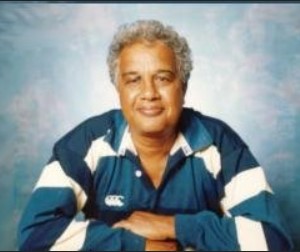An “Indian Ocean World Museum” in Sri Lanka?-by Michael Roberts

Source:Thuppahis
Dr. Darini Rajasingham-Senanayake, presenting a proposal with this fuller title “Concept Note for an Indian Ocean World Museum, Researc and Resource Center”
Sri Lanka is ideally located for an Indian Ocean World Museum in what has been termed the “Asian 21st Century.” People of diverse cultures, religions, histories, and linguistic communities have mixed and mingled for centuries along the ancient spice and silk trade routes of the Indian Ocean where Lanka is centrally placed.
Map from Arundathie abeysinghe’s article referred to below
The ‘Indian Ocean World’ encompasses East, Southeast Asia and China, South Asia, the Middle East and east coast of Africa, and is the oldest Ocean-based system of trade, exchange, and production. Monsoon-based, trans-oceanic travel and trade led to the emergence by c. 300 BCE of a sophisticated and durable system of long-distance exchange of commodities, monies, technology, ideas, and people and saw the growth of major centres of production. The IOR was thus home to the first “global” economy; one that dominated the region until at least the mid-eighteenth century, and is once again resurgent.
Today the Indian Ocean world comprises of 50% of the earth’s population and contains fast developing countries, notably China, India and Indonesia- ASEAN- as well as, Saudi Arabia, Iran, the Emirates, South Africa, and is poised to be the world’s leading economic region.
Simultaneously, the Indian Ocean Region has seen rapid environmentally destructive militarization, new conflicts and hybrid war threats that particularly impinge on small countries and islands, many of which are saddled with debt traps.
As such, an Indian Ocean World Museum, Resource and Research Center would be a space to promote inter-Asian geopolitical economic dialogue, peace and security– building on a shared Indian Ocean world history and heritage of exchange among diverse religio-cultural civilizations in the region and beyond.
Why Sri Lanka?
The island sits at the center of the Indian Ocean on one of the world’s busiest trade, energy and Submarine/ Undersea Data Cable (UDC), routes and has been a hub of trade, commerce and communication including cyber.
The strategic island’s many harbours; from Trincomalee, to Galle, Mannar and Colombo are marked on ancient and modern sea farer’s maps and the country has been considered important for control and surveillance of the Indian Ocean system and indeed global trade. Hence its maritime provinces were colonized for almost 450 years by competing European maritime powers before 1948.
Aa small country which does not have foreign military bases and has good relations with all, Sri Lanka is well placed to leverage the good will of the big powers of the region and the world in the interest of peace, security and development for all – particularly small islands and countries also to enable them to sustainably harvest their valuable ocean resources, both living and non-living.
Indian Ocean World System – Past and Present
Theravada Buddhism spread via Lanka along the maritime Silk Route to southeast and east Asia, including Burma, Thailand, Cambodia and Laos centuries ago. The fifteenth century Tri-lingual Galle Stele, with inscriptions in Persian, Tamil and Chinese that is currently housed at the Colombo Museum is exemplary of a multipolar Indian Ocean world trading system.
Ceylon/ Sri Lanka led the initiative on the ‘Indian Ocean as a Zone of Peace’ during the Cold War as a member of the Non-Aligned Movement. However, in recent times the Indian Ocean World has been increasingly partitioned into the ‘Indo-Pacific’ to the East of Sri Lanka and the ‘Indo-Atlantic’ to the west as a new Cold War emerges.
In the context, a proposed museum, research and resource center would promote inter-Asian and intra-Indian Ocean regional dialogue and exchanges; the study of the history, economy, and lived cultures, civilizational connectivities, and environmental dimensions of peoples of the Indian Ocean world (IOW) – from China to Southeast and South Asia, the Middle East and East Africa, with a special focus on Indian Ocean island peoples and cultures.
It would also focus Cold War history and de-colonization struggles across the Indian Ocean World The proposed museum and research center will stress connectivity, shared history and heritage across Indian oceanic sub-regions.
We envisage inviting India, and coastal South Asian and Bay of Bengal countries, China, Japan Korean and South east Asian countries, west Asian countries particularly, Iran and Arabian countries, as well as, the countries of the east African coast – South Africa, Mosambique, Somalia, Tanzania etc. to contribute to help build up collections for a maritime Silk Route of the Indian Ocean world history and heritage museum located in Sri Lanka. Galleries and collections may focus on tracing connectivities and disjunctions in material and non-material culture along thematic and sub-regional lines.
Themes
Culture, cuisine and tea (green gold). Indian Ocean sub-regions exist but rice, fish and tea, were staple diets and intrinsic to the food culture of the peoples of the Indian Ocean Spice and Silk routes.
Cloths, cotton, silk, paper
Arts, crafts and pottery and gold — including white gold (porcelain), Black gold (oil) and Green (tea) gold.
Overlapping and polytheistic religious practices and spiritual traditions – Hindu/Buddhist, Islamic and Christian
Fisheries and minerals, military bases and maritime zones.
Submarine Data Cables, Cyber security, technology transfers.








